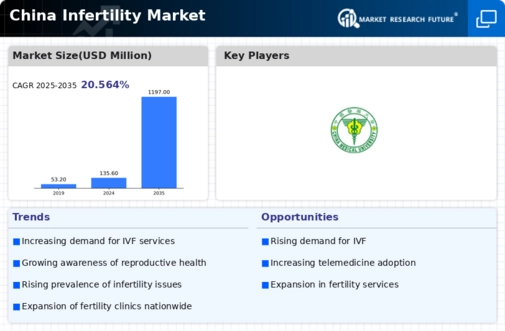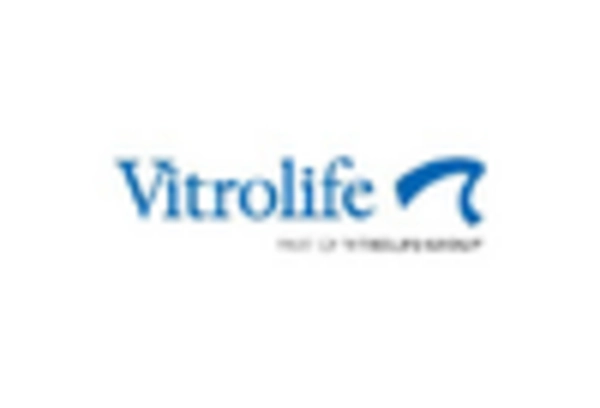Rising Age of Parenthood
The trend of delayed parenthood in China is significantly impacting the infertility market. As individuals prioritize education and career advancement, many are choosing to start families later in life. This shift has resulted in a higher incidence of infertility, as fertility rates decline with age. Data indicates that women aged 30 and above are increasingly seeking fertility treatments, contributing to a growing market. The infertility market is responding to this demographic change by offering tailored services that cater to older parents. This trend not only highlights the need for advanced reproductive technologies but also suggests a potential for growth in the market as more individuals seek assistance in overcoming age-related fertility challenges.
Government Initiatives and Policies
Government initiatives and policies aimed at addressing infertility issues are playing a pivotal role in shaping the infertility market in China. Recent policies have focused on improving access to fertility treatments and supporting research in reproductive health. For example, the government has introduced subsidies for certain fertility treatments, making them more affordable for couples. This financial support is likely to increase the number of individuals seeking assistance, thereby expanding the market. Additionally, regulatory frameworks are being established to ensure the quality and safety of fertility services. As these initiatives continue to evolve, they are expected to further stimulate growth in the infertility market, creating a more supportive environment for those facing infertility challenges.
Cultural Shifts Towards Family Planning
Cultural shifts in China regarding family planning are influencing the infertility market. Traditionally, there has been a strong emphasis on having children, but changing societal values are leading to a more nuanced understanding of family dynamics. As couples navigate their personal and professional lives, the decision to seek fertility assistance is becoming more common. This cultural evolution is fostering an environment where infertility treatments are increasingly accepted and sought after. The infertility market is adapting to these changes by providing a range of services that align with modern family planning needs. This shift not only reflects changing attitudes but also indicates a potential for growth as more individuals recognize the importance of reproductive health.
Advancements in Reproductive Technologies
Technological innovations in reproductive health are transforming the infertility market in China. The introduction of advanced techniques such as in vitro fertilization (IVF), intracytoplasmic sperm injection (ICSI), and preimplantation genetic testing (PGT) has expanded treatment options for couples facing infertility. These advancements have led to improved success rates, making fertility treatments more appealing. For instance, the success rate of IVF has reportedly increased to around 50% for women under 35, which is a significant factor driving demand. As technology continues to evolve, the infertility market is likely to witness further enhancements in treatment efficacy and patient experience, thereby attracting more individuals seeking solutions to their fertility challenges.
Increasing Awareness of Infertility Issues
The growing awareness of infertility issues among the population in China is a crucial driver for the infertility market. As societal norms evolve, more individuals and couples are openly discussing their struggles with infertility. This shift in perception is leading to increased demand for fertility services and treatments. According to recent data, approximately 15% of couples in China experience infertility, which has prompted healthcare providers to enhance their offerings. The rise in awareness is also encouraging educational campaigns that inform the public about available options, thereby expanding the market. Furthermore, as more people seek assistance, the infertility market is likely to see a surge in both demand and innovation in treatment options.
















